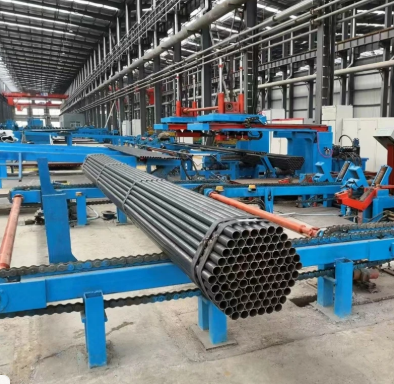Pipe Stands for Welding Solutions
In the field of industrial fabrication and construction, efficiency, accuracy, and safety are directly tied to the quality of the tools and equipment used. Welding large-diameter pipelines or structural pipes requires stable support and reliable machinery to ensure flawless joints. Modern pipe stands for welding and associated pipeline gear have become indispensable for industries ranging from oil and gas to shipbuilding, power generation, and infrastructure projects. They not only make welding safer but also significantly improve productivity by allowing workers to maintain consistent alignment and precision throughout the process.
Enhanced Efficiency with Pipeline Welding Gear
The use of high-quality pipeline welding gear has transformed how industries handle heavy-duty pipe fabrication. These tools are designed to provide precise rotation, height adjustment, and stability during the welding process, ensuring pipes remain properly aligned regardless of their size or material. Advanced welding gear reduces worker fatigue by minimizing manual handling and speeding up production cycles. Whether used in field construction or workshop manufacturing, reliable gear enhances weld accuracy and lowers the chances of costly rework. Companies investing in such equipment benefit from improved project timelines, consistent welding quality, and a safer work environment for operators.

The Role of Pipeline Welding Machines in Modern Projects
A pipeline welding machine is central to achieving durable and efficient pipeline connections. Modern machines incorporate advanced control systems, automation features, and adjustable speed mechanisms, allowing welders to maintain consistency across long runs of pipe joints. In large-scale projects such as cross-country pipelines or industrial plant construction, these machines ensure every weld meets stringent safety and performance standards. By reducing human error and delivering repeatable precision, pipeline welding machines not only increase productivity but also extend the service life of critical infrastructure. Their adaptability to various pipe diameters and thicknesses makes them an essential investment across multiple sectors.
Applications and Benefits of Pipes Welding
Pipes welding is applied in countless industries where robust connections are required to transport liquids, gases, or structural loads. Oil and gas companies depend on welding to secure long-distance pipelines that withstand extreme pressures. Power plants use welded pipes in boiler systems, while water treatment facilities rely on them for fluid transfer. The advantages of welded pipes include seamless connections, high strength, and resistance to leakage. Furthermore, modern welding technology ensures that the joints can handle thermal expansion, vibration, and corrosive environments, making welded systems a reliable choice for critical infrastructure projects.
Future Trends in Welding Equipment
The future of pipe stands for welding and associated equipment lies in automation and digital integration. Smart systems that allow for real-time monitoring of welding parameters, robotic assistance for repetitive tasks, and AI-driven quality control are becoming increasingly popular. These innovations will further minimize human intervention, enhance workplace safety, and ensure that welds meet international quality standards. Additionally, eco-friendly technologies are emerging, focusing on reducing energy consumption and minimizing emissions during the welding process. As industries demand higher efficiency and sustainability, modern welding equipment will continue to evolve to meet these challenges.
Pipe Stands for Welding FAQs
What are pipe stands for welding used for?
Pipe stands provide stability and alignment during welding operations, especially for large or heavy pipes. They allow welders to adjust height, rotate pipes, and maintain accurate positioning to achieve strong, reliable welds.
Why is pipeline welding gear important in construction projects?
Pipeline welding gear ensures that pipes remain secure, aligned, and properly supported throughout the welding process. This reduces errors, minimizes rework, and speeds up construction timelines, ultimately lowering project costs.
How does a pipeline welding machine improve efficiency?
A pipeline welding machine automates parts of the welding process, delivering consistent weld quality and reducing human error. Its adjustable settings allow operators to adapt to different pipe sizes and materials, ensuring efficiency in large-scale projects.
What industries benefit most from pipes welding?
Industries such as oil and gas, petrochemicals, power generation, water treatment, and shipbuilding rely heavily on pipes welding to build safe and durable fluid transport systems. These welded connections ensure reliability under high pressure and harsh environments.
What are the emerging trends in pipeline welding equipment?
Emerging trends include robotic welding systems, AI-based quality inspection, and energy-efficient welding technologies. These advancements focus on improving accuracy, reducing labor dependency, and promoting sustainable industrial practices.
-
Precision Cutting Machinery: From Low-Speed Saws to Advanced Flying Shearsຂ່າວAug.26,2025
-
Machinery for Pipe Fabrication: From Welding to Cuttingຂ່າວAug.26,2025
-
Leading Manufacturers of Pipe and Tube Machineryຂ່າວAug.26,2025
-
Key Manufacturers of Tube and Pipe Processing Machineryຂ່າວAug.26,2025
-
Best Machinery for Metal Pipe Fabrication: Cutting, Rolling, and Weldingຂ່າວAug.26,2025
-
Advanced Cutting Solutions: Exploring CNC Cold Saws and Flying Saws for Industrial Needsຂ່າວAug.26,2025


